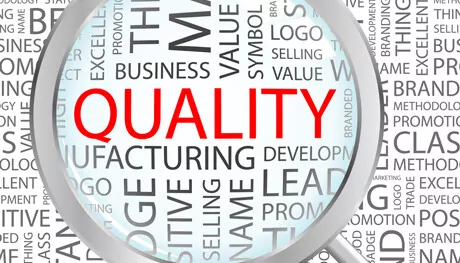Author: Camila da Silva Esteves, Manager, Medical Devices / IVD, PharmaLex Australia
The Medicines Act 1981 and its regulations controlling the supply of medical devices in New Zealand have been at the center of discussions since 2015. Experience through the COVID-19 pandemic further highlighted the urgent need to enable faster access to therapeutic goods, whilst still ensuring regulatory systems focus on the safety of products.
The Therapeutic Products Bill introduced in November 2022 will replace the Medicines Act 1981 (Medicines Act) and the Dietary Supplements Regulations 1985 (Dietary Supplements Regulations) currently in place in New Zealand. It will regulate how medicines, active ingredients, devices and natural health products are manufactured, tested, imported, promoted, supplied and exported.
In December 2022, the Therapeutic Products Bill was referred to the Health Committee for its first reading. Between December 2022 and March 2023, the Health Committee received several written and oral submissions. Of the more than 16,500 submissions received, 235 submitters were heard.
On June 13, 2023, the Health Committee reported that they could not recommend the bill be passed, and several amendments were recommended by majority.
While the committee made several recommendations other product types, there were specific requests made for medical devices, including:
- More flexible definitions of personalized medical devices (patient-matched and custom-made devices). The committee also asked that the bill reference further rules for clarification if a device is categorized under one of these definitions.
- Further definition to distinguish between Software as a Medical Device and Software in a Medical Device, and to provide secondary regulation based on international best practices.
Although various parties agreed that there is a need to modernize the regulation and consider the implementation of a new regulator, there are still arguments that the new system is an overreach that will create high costs while failing to harmonize with international standards. The concern is that this could create unnecessary workload for the regulator and a barrier to accessing therapeutic products in New Zealand.
The Therapeutic Products Bill explained
The new regulatory scheme under the Therapeutic Products Bill will consist of the Act, Regulations, as well as rules and instruments:
- The Act will define the purpose and principles, roles and obligations of the sector and powers and duties of the regulator and overall system.
- The Regulations will define the technical and operational requirements, high-level classifications and fees, and rule-making criteria.
- The Rules and other instruments will define the detailed criteria and product standards, including license and permit conditions, authorization pathways and recognized authorities.
The proposed regulatory scheme consists of two broad components:
- Requirements for market authorization, controlled activities and supply chain. Under this bill, all therapeutic products, including medical devices, will require authorization to be exported, imported and supplied in New Zealand.
- A list of controlled activities that will be regulated by the bill, including manufacturing, exporting and conducting clinical trials. Although advertising is not specifically listed within the controlled activities list, the bill also allows the regulator to impose restrictions on the advertising of therapeutic products.
Another important aspect of the bill is the new regulator, which will be exercised by an independent statutory officer appointed by the Director General of Manatū Hauora. This new regulator will be responsible for a broader scope of products and activities, as compared to Medsafe, the New Zealand Medicines and Medical Devices Safety Authority.
Impact on Medical Device Manufacturers
Ultimately, the bill and the new regulatory scheme will bring New Zealand’s regulations in line with international best practices according to the International Medical Device Regulators Forum (IMDRF) and the World Health Organization (WHO). However, the impact on medical device manufacturers wishing to market in New Zealand will be significant, and careful planning is required despite the expected two to three year transition period after the bill receives Royal Assent.
One of the most critical changes will be the setting of a cost-recovery model, in which the regulator will charge fees for several activities, such as approval, accreditation and certification, audits of individual businesses and export certifications. This change has the potential to significantly impact businesses, as there are currently no costs associated with market authorization/WAND (Web Assisted Notification of Devices database) applications with Medsafe.
The bill also outlines the requirements for market authorization for activities, facilities and products. The new regulations will cover new types of medical devices, including patient-matched and custom-made devices, production systems, software as medical devices and supply- and use-restricted devices. A person will only be able to import, manufacture, supply, export, use a use-restricted device or conduct a clinical trial if authorized by a license, permit or through an exemption, according to the bill.
The new regimen will also follow market authorization pathways according to the risk classification of medical devices, where lower-risk products may have market authorization granted through a self-assessment or self-declaration pathway, and intermediate and higher-risk devices will require an evaluation by the regulator to grant market authorization.
This is a significant contrast with the current WAND listing process and will result in additional lead times to market that need to be accommodated by manufacturers wanting to commercialize in New Zealand.
Therapeutic Products Bill vs International Regulatory Regulation
The Therapeutic Products Bill and the new regulatory framework is clearly based on IMDRF and WHO best practices. It is intended to promote marketing of safe and effective medical devices in New Zealand. However, there are still some important questions to address when compared with other regulations, such as Australia’s Therapeutic Goods (Medical Devices) Regulations 2002, the European Medical Devices Regulations (MDR 2017/745) and the US FDA Code of Federal Regulations.
While the principles may be aligned for companies that manufacture, import or export medical devices, such as requirements for quality management systems, in-country representation and pre-market authorization, the bill does not – as yet — specify the requirements and documentation needed to substantiate local market approval.
Importantly, the new bill does not currently have provisions for foreign manufacturers and local sponsors to leverage international market approvals for faster or abridged access into New Zealand. It is expected that, once the new bill is approved, more regulations and rules with specific arrangements will be created by the regulator for medical devices in New Zealand.
Next Steps
The bill will now progress to a second reading which will be referred to a committee of the whole House. Watch this space as we continue to monitor the progress of the Therapeutic Products Bill and keep you updated on the latest news and frameworks.
There is still plenty of time for manufacturers to transition to the new system, but don’t leave it to the last minute. What are your concerns about the changes taking place in New Zealand and how those might be impacted by international regulations? We are happy to discuss the implications with you.








